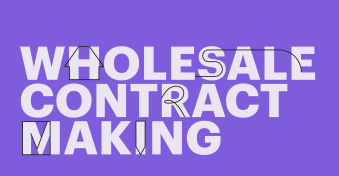If you’re looking to buy or sell a home, you’ve probably already figured out that the realm of real estate can be truly confusing, steeped with its own terms and specific language.
In this article, we aim to demystify two of the most important terms of the home sales process: “under contract” and “pending sale” (or “pending” for short), to make everything more transparent and explain how they relate to different phases of the home selling process.
If it’s your first time buying or selling a home (especially if you inherited the property and know little about real estate transactions), you’re no doubt eager to find answers to questions like:
- Can a deal that’s under contract fall through? What about a pending sale?
- How long does a property typically stay under contract?
- Can a buyer back out of a contract while the property is under contract?
- Can the seller still accept formal offers if a property is under contract? What if it’s pending?
If you’re a realtor, you’re probably very familiar with all the different terms and can explain what they mean even in your sleep — but we have important information to share with you, too, so don’t close the page just yet!
For all parties, undertaking a real estate transaction means that you’ll soon be swimming in paperwork.
However, by going digital, you’ll barely even have to get your feet wet.
With a contract management solution — and especially one that’s built with real estate in mind – you’ll be able to significantly simplify and speed up the entire process.
Which is what everyone wants, right?
So, let’s see what “under contract” and “pending” mean — and go over how to streamline everything involved.
Key takeaways
- Under contract and pending sale describe two different stages of the home buying process. Under contract comes right after a buyer’s offer is accepted, while pending sale is the last stage before finalizing a deal.
- While contracts can fall through during either stage, its occurrence is far more likely when a deal is under contract.
- If you’re a buyer, you can still make an offer for a property that’s under contract. If the primary contract falls through, your offer may be considered.
- Real estate deals are complex and involve a lot of paperwork, but you can significantly streamline the entire process with the right contract management platform.
Under contract vs. pending: What are the differences?
The terms “under contract” and “pending sale” describe two distinct phases of the real estate transaction and have different implications for everyone involved — homebuyers, sellers, and realtors alike.
The main difference lies in the level of certainty and the exact stage of the selling process.
“Under contract” indicates that an offer has been accepted and that both sides have to fulfill the conditions (contingencies) of the contract for the home purchase to take place.
“Pending sale” implies that the necessary steps and contingencies have been addressed, bringing the transaction closer to completion.
Let’s look at the details.
The “under contract” stage
“Under contract” refers to the initial stage in the selling process where the homeowner has accepted an offer from a buyer.
At this point, both parties still need to meet outstanding conditions.
If you’re looking to buy, making an offer for a property that’s under contract still makes sense.
If you’re looking to sell, you might specify that a property is still “active under contract,” i.e., that you’re accepting offers.
Both parties have agreed on the terms of the contract, including the purchase price, obtaining financing, any additional sale contingencies, and closing date.
However, the sale is not yet finalized.
Additionally, there are two options; the sale might be:
- Contingent under contract, i.e., subject to specific conditions regarding financing, inspections, repairs, or the seller buying a new home (or the buyer selling their current home)
- Noncontingent under contract, i.e., where both parties have agreed on the specifics and the property will be purchased “as is”
As you’ll notice, we’re talking about a sale that’s “under contract”… What about the contract itself, though?
The contract outlines all the specifics, which means that it should be well-written and include all the necessary details.
To simplify all this for you, we’ve created a property sale agreement template which you can use for free.
It helps ensure a smooth transaction between a buyer and seller and contains all the key elements of the sale.
The “pending sale” stage
“Pending sale” refers to a later stage in the process, when all contingencies outlined in the contract have been met or waived, including all conditions around inspections, ordering an appraisal and steps to secure financing.
The pending stage typically precedes the closing of the deal.
During this stage, both parties make final preparations to execute the sale, including finalizing the financing, preparing all additional documents, and coordinating the sale with all parties involved (lenders, escrow agents, title companies).
While the sale might still fall through (for example, if the buyer fails to secure financing), the probability for this is much lower.
In all cases, it’s important to assess whether you risk losing your deposit.
Under contract vs pending: a comparison chart
To make things simpler, here’s a comparison chart that outlines the difference between a purchase under contract and a pending sale:
| Under contract | Pending sale | |
|---|---|---|
| Definition | Seller has accepted an offer |
Property is under contract and all contingencies have been satisfied or waived |
| Sale status | Property is generally no longer marketed, though “active under contract” status means other offers still accepted | Property is off the market |
| Contract | Both sides sign a contract | Contingencies in the contract have been fulfilled or waived |
| Buyer’s rights | The buyer has the contractual right to purchase the property if all conditions are met | Conditions are met, the buyer is contractually required to purchase the property |
| Obligations for both sides | Fulfill terms of the contract | Prepare for the closing process |
| Contingencies | May still have contingencies pending (e.g., inspections, financing) |
All contingencies have been satisfied or waived |
| Potential risks | The buyer or seller could breach the contract terms (fail to secure financing or meet additional conditions) |
During the final preparations before closing there’s still potential for last-minute complications (but the risk is lower) |
| Market availability | Unless stated, property is generally unavailable for other potential buyers | Property is unavailable for other buyers |
| Time period | This stage comes after the seller has accepted an offer | This stage occurs after all contingencies are met |
| Progress | Early stage in the selling process | Closer to the finalization of the transaction |
Understanding these differences is crucial for buyers and sellers alike.
As a buyer, knowing whether a property is under contract or pending can guide your expectations regarding the availability and likelihood of a successful purchase.
As a seller, understanding these stages helps you manage the selling process effectively and navigate toward a successful closing.
Why are contingencies so important?
Contingencies play a crucial role in the home purchasing process and help protect buyers from purchasing a property that has major problems or losing their earnest money deposit.
They also protect sellers by laying out the conditions of the sale and making it easier to close the deal.
Essentially, contingencies:
Protect the buyer and enable them to conduct due diligence
Nobody wants to buy a home only to discover massive problems with its structural integrity three months later.
So, contingencies serve as safeguards for the buyer, enabling them to conduct thorough due diligence on the property.
The buyer can include specific conditions in the purchase contract that must be met for the sale to proceed, such as inspections, specific repairs or replacements made, securing financing, a clause requiring their current house is sold as a condition of buying the new property, and more.
If any of these common contingencies aren’t satisfied, the buyer may be able to back out of the contract without penalty.
Serve as a framework for the necessary inspections, eventual repairs, and financing
A home inspection contingency allows the buyer to hire a professional inspector to evaluate the property’s structure and overall condition.
If during inspections you uncover any significant issues, you can negotiate repairs, ask for the sale price to be adjusted, or even choose to withdraw from the contract.
Provide financial protection
Loan and financing contingencies help ensure that the buyer can secure financing to make the purchase.
For example, the purchase may be contingent upon the buyer obtaining a mortgage loan at specific terms and interest rates.
If the buyer is unable to secure financing within the agreed-upon timeframe or the terms are unfavorable, this contingency allows them to back out.
Can be used as a negotiation tool
Contingencies can be used as a negotiation tool between the buyer and the seller and provide the buyer with an added layer of flexibility.
If you’re the buyer, you can request specific remedies as a condition for moving forward with the purchase, for example repairs.
How can the real estate purchasing process be simplified?
Real-estate purchases usually involve an entire mountain of paperwork — and, as on a real mountain, it’s easy to get lost if you don’t have the right tools in hand.
A contract management system like PandaDoc, however, can serve as a compass and guide you through the entire process, making it more of a straight path on a hill than a labyrinth in a dense forest.
And that’s valid for everyone involved — after all, you’re all trying to reach the same summit, Mount Successful Deal.
The old way of doing things involves printing out everything, having everyone meet a number of times, signing multiple copies of each document, and so on.
While you can’t have a shortcut for everything — you still need an appraiser to physically look at a property, for example, or examine repair work — you can definitely fast track the purchase process, lay out and negotiate all contingencies faster, and keep track of the exact stage you’re in if you’re using a digital-first approach and the right platform.
That’s exactly why our team has set out on a mission to make the complex real estate contract management process clear, simple, and above all, fast.
PandaDoc enables everyone to move through the sale process quickly, negotiate all elements of the deal more efficiently, and make necessary changes in real time.
And if you’re a realtor, we’ve got you covered, too. As you know (better than anyone), the real estate industry is fast-paced.
Instead of spending time in your office copy-pasting contacts or having to contact all parties to collect signatures multiple times, you can simply grab one of our many real-estate templates and customize it as needed.
You can even include photos!
Not to mention that collecting eSignatures is so much easier than having to meet each time a document needs to be signed. (Rest assured, electronic signatures hold up in court).
The real estate sale process is complex — but you can make it simpler
Under contract and pending sale are two distinct stages of the real estate selling process.
Essentially, under contract signifies the start of the marathon, while pending sale means you’re actually seeing the finish line, where you only have to run the final meters to reach it.
(Of course, things can go wrong at any point, but seeing the checkered flag means you’re nearly there, keys in hand).
If you have the right equipment — that is, a powerful and intuitive platform for real estate contract management — this will help you complete everything faster and also protect you against major risks.
With PandaDoc, you can streamline the entire real estate negotiation and purchasing process, regardless of your role in it.
Sellers, buyers, and real estate agents all have a lot to win by going digital, both in terms of simplicity and speed.
Simplify real estate deals with eSignatures.
Sign up for a free demo today to see for yourself how much easier the home sale process can be.
Frequently asked questions
-
How long a property stays under contract can vary depending on the contingencies and terms negotiated, but typically it’s 30 days. If both parties agree, this stage can take longer; for example, if the seller needs to do repair work or the buyer needs more time to secure financing.
-
Yes, a property can be under contract and the owner might still accept backup offers. Interested buyers can submit an offer to be considered as a secondary option in case the primary contract falls through.
-
Usually, a buyer can back out of a contract while the property is under contract if specific contingencies, such as for inspection or financing, aren’t satisfied. This could provide them with an opportunity to back out without breaching the contract and therefore recover their earnest money deposit.
-
Although rare, a home sale that has a pending status can fall through — for example if the current buyer is unable to secure financing or sell their previous property. Should there be a last-minute problem that kills the sale, the deal will be voided and the house put back on the market once again.
Disclaimer
PandaDoc is not a law firm, or a substitute for an attorney or law firm. This page is not intended to and does not provide legal advice. Should you have legal questions on the validity of e-signatures or digital signatures and the enforceability thereof, please consult with an attorney or law firm. Use of PandaDocs services are governed by our Terms of Use and Privacy Policy.


